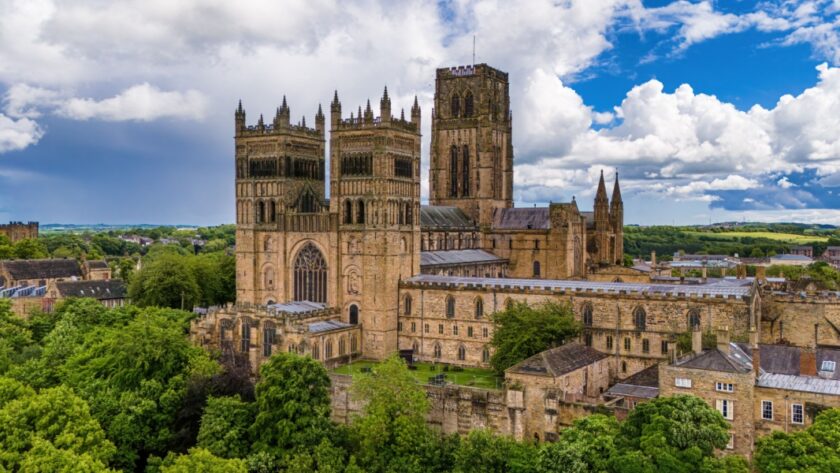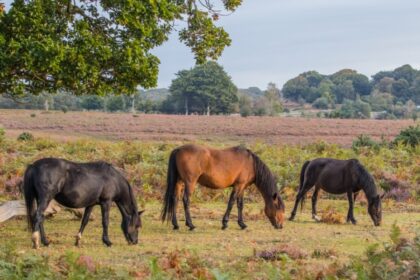If you were to ask a roomful of Britons to name a city break destination, Durham probably wouldn’t make the top ten. It wouldn’t even make the top twenty. And that’s a great pity, because Durham is, let’s be quite clear about this, ridiculously lovely.
Durham, so much history in such a small space
Perched rather theatrically on a rocky peninsula and looped like a ribbon by the River Wear, Durham is a city that seems to have been built by a particularly romantic stonemason with a flair for drama. At its centre sits Durham Cathedral, an edifice so impressive it actually makes you stand still and involuntarily exhale. It is, without exaggeration, one of the greatest buildings in Europe, and I say that having once been trapped in the Vatican gift shop for an hour.
Built between 1093 and 1133 to house the remains of St Cuthbert (who had quite a journey from Lindisfarne to get there, his posthumous travel itinerary could make a decent miniseries), the cathedral is a Norman masterpiece. Inside, the colossal stone pillars soar upwards like something out of Tolkien, and the whole place smells faintly of candlewax and very old secrets. Don’t skip the tower climb, 325 steps, yes, but the view across the city and surrounding countryside is the sort of thing you’ll remember when you’re 90 and confusing your children’s names.
Next door is Durham Castle, which, like so many things in Britain, is now part of a university. If you’ve ever fantasised about going to Hogwarts, this is your moment: students actually live in the castle. You can take a guided tour when they’re not frantically writing essays or sneaking contraband toasties into the Great Hall.
More than just a pretty cathedral (though that helps)
Wander downhill from the cathedral and you’ll find yourself in Durham’s medieval heart, a tangle of cobbled streets with names like Saddler Street and Owengate. There are shops, tea rooms, and that essential accessory to any English city worth visiting: a bookshop that smells like damp and wisdom. Bill Bryson himself, incidentally, was Chancellor of Durham University for a spell and famously called Durham “a perfect little city”, which tells you everything you need to know, really.
For a relatively small city, there’s a satisfying amount to do. Start with a walk along the river, where the views of the cathedral from Prebends Bridge will tempt even the most camera-averse into a photo or twelve. You can also hire a rowing boat from Browns Boathouse and do your best Brideshead Revisited impression, though the river’s gentle pace means you’ll get more exercise laughing than rowing.
If you fancy a bit more greenery, head to the Botanic Garden, a peaceful 25-acre spot tucked into the southern edge of the city. It has tropical greenhouses, woodland walks, and (inexplicably) a giant caterpillar sculpture. Or take a gentle amble through the Durham University’s Museum of Archaeology, which is far more interesting than it sounds and includes some surprisingly spiky bits of Roman weaponry.
Durham is also a good place to eat, something that hasn’t always been true of Northern cathedral cities. Flat White Kitchen, in a 17th-century townhouse, does superb brunch and consistently excellent coffee. The Rabbit Hole is a fantastically odd Chinese-Jazz fusion restaurant that shouldn’t work but does. And Coarse, a new arrival on the scene, serves up tasting menus that wouldn’t feel out of place in London (except the staff are friendlier and nobody’s wearing ironic glasses).
If you’re staying overnight, and you absolutely should, there’s a pleasing range of accommodation, from the boutique-y Forty Winks (which, in defiance of all British B&B clichés, is actually stylish) to riverside lodges and even university rooms available outside term time. There are few thrills quite like sleeping in a castle, and Durham Castle lets you do exactly that, breakfast included, which somehow makes it even better.
Now, a brief historical interlude, because Durham’s story is the sort you might hear from a mildly drunk historian at a very good dinner party. The city sprang up around the shrine of St Cuthbert, a 7th-century monk and miracle-worker whose bones were ferried across the North by devoted monks fleeing Viking raids. According to legend, they were guided to Durham by divine intervention (and possibly a handy sense of topography). By the time the Normans arrived, Durham was both a spiritual and strategic powerhouse. In fact, the Prince Bishops of Durham ruled the region with quasi-royal authority for centuries, wielding sword and scripture in roughly equal measure.
You can explore this curious theocratic legacy at the Palace Green Library or in the Durham Heritage Centre, where you’ll find displays on everything from medieval manuscripts to coal mining, which, let’s face it, is quite the historical arc.
Durham is also an excellent base for exploring County Durham more widely. Within half an hour’s drive you’ve got Beamish, the open-air museum where entire 1900s streets have been recreated with borderline obsessive detail; Raby Castle, still privately owned and pleasingly turreted; and the windswept beauty of the Durham Dales, where you’ll find waterfalls, dry stone walls, and sheep with excellent posture.
But even if you don’t venture beyond the city itself, you’ll find that Durham punches well above its weight. It’s small enough to be manageable but large enough to surprise you. It’s handsome without being showy, rich in history without being smothered by it, and just a little bit magical, especially when dusk falls and the cathedral lights up like something from a fairy tale.
In short: go to Durham. Have the coffee. Climb the tower. Marvel. Repeat.





